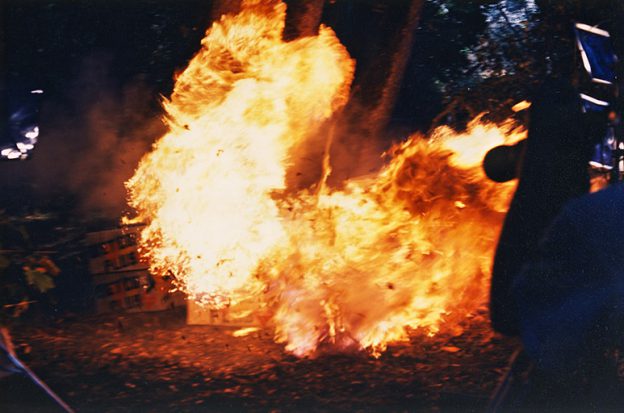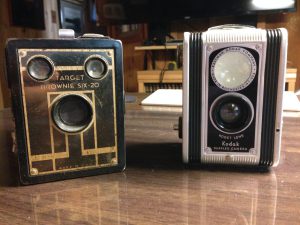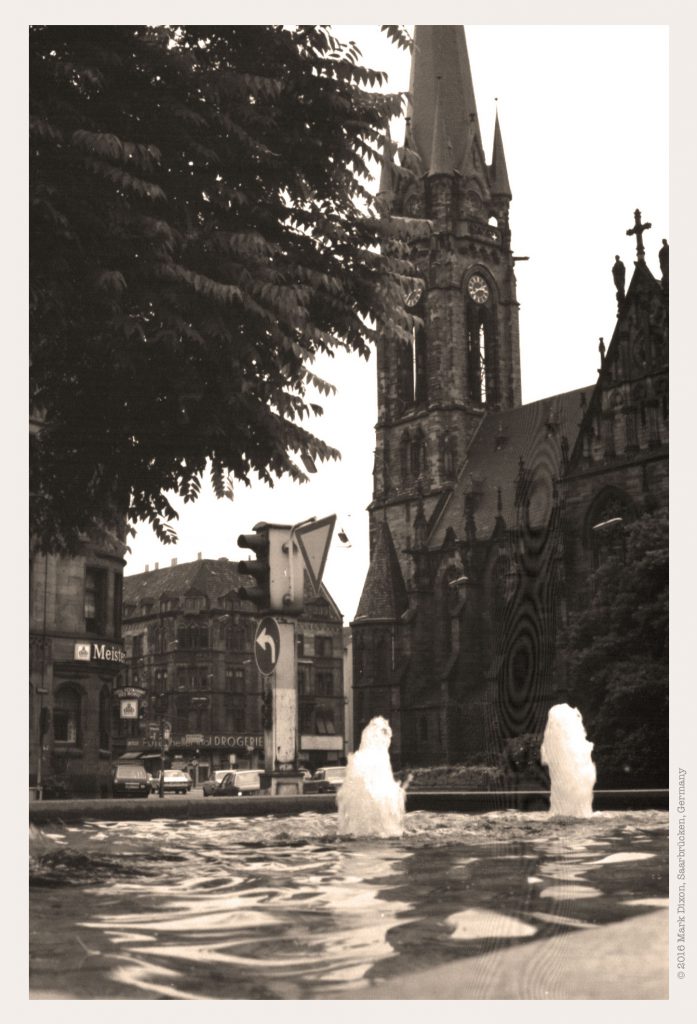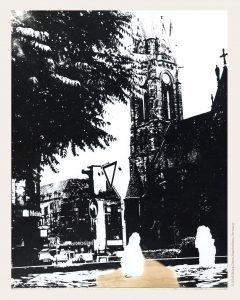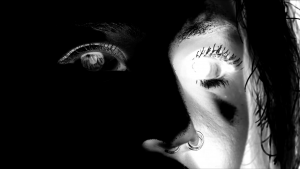The kitchen is bright, very bright. The incandescent light is harsh on people as they run in from the back yard through the sliding glass doors. One goes out at the same time as another comes in. It doesn’t quite work as they both have to squeeze by each other and spill most of the water they’re carrying. Off to the right Bo comes running in from the bathroom heading outside and slides, nearly falling, his back-length black hair wrapping around his face. Through the glass doors I can see people running around as they hand off pans of water in a dysfunctional fire brigade. I know Mark and Jon are over the fence in the neighbor’s yard but can’t see what’s happening. Just then a woman I don’t know rushes from the kitchen pushing past me. She’s carrying a saucepan with water slapping over the edge. Stepping out of the way I grab the phone from its cradle trying to find the courage to make the call, realizing it didn’t take a psychic to predict all this. Despite all this pandemonium a strange calm comes over me as I wonder where the fun would be in my life if I never listened to the devil on my shoulder.
Yesterday, Mark and Jon were at the film studio with me as I showed them some of the special effects devices we used in our film production. Basically, we just liked to blow things up. Our film involved guns shooting off followed by dramatic explosions and people running. Our actors were always running. It was only natural for Mark and Jon to be curious as to how we made our effects happen. And, I should add, safely.
There were two types of explosive devices we created for our effects: squibs and gas bombs. The squib was the little puff of smoke set off to simulate gunfire. They were nothing special. Sandwiched between paper labels we put flash powder and a two-pronged model rocket igniter. The prongs were hooked to electric cords and switches. On cue, you got puff, puff, puff.
The most dramatic visual effects were the gas bombs. Not too much more complicated than the squibs, they were loud and a hair more dangerous. We would take gum ball machine capsules and fill them with gun powder and flash powder, insert the same two-pronged rocket ignitors used for the squibs, then tape it together. This was the ignition for the gas bomb. These were put into half-pint milk containers filled with gas.
When I showed Mark the squibs and gas igniters he got that ear-to-ear smile that underlined the sparkle in his eyes. Even through his wire-framed glasses I could see a glint. With his red hair flopping down on one side of his face he looked like a little kid ready for a new adventure. We thought alike in so many ways. Our artistic ideas tended to lean toward a type of performance art. He played guitar in a band and I was part of a film production. We both liked an audience. As I came to know Mark better I always suspected his curiosity had a devious side. Not in any menacing or maniacal sense. He was never malicious or evil, but I was able see his brain working with the details of my explanations about our explosive effects.
Mark had a charm that seemed to match is red hair — noticeable and effortless. Shyness was not something that would ever be said about him. He was not an insincere flatterer. On the contrary, he just liked to engage people and find out about them. Once he connected, his eyes would keep your attention with their focus. After we got to know each other his sense of adventure began to show itself. Add his charm and a gift for words and he was something of an Eddie Haskel. We became fast friends.
As Mark and I were rummaging through shelves Jon was over at the other end of the studio checking out an old set we never dismantled. He was quite an adventurer himself. Efficient in just about everything, he would never shy away from a new challenge. Muscular and stocky, he was like an action figure. His closet was a collection of personae. There was the biker on his ’79 Harley, the mountain man survivalist, the rugby-playing-white-water-river-raft-guide, soldier, marine and caveman. Barroom brawl or broken bones he was someone you could always feel safe with.
Once I pulled out the squibs and gas bomb igniter Jon came over to take a closer look. We all decided it would be fun to bring these to the party. Mark thought it would be a good opening act before his band played. A large crowd would likely show up and I was looking forward to helping with the entertainment.
It was a warm summer evening and the crowd started to show up at Mark’s house. Jon and I got all the electrical gear arranged. I prepared the squibs and mentioned we didn’t have any container for the gas bomb. Jon looked through the refrigerator and pulled out a quart-size yogurt container with just a little crusty yogurt left in it. I pointed out that a quart size container would involve using too much gas. We all looked at each other and shrugged our shoulders and continued with the preparations. Mark and I started to prepare the gas bomb. I asked Jon to see if he can find some leaves. There weren’t any lying around on the ground so he brought over newspaper instead.
Mark and I prepared the gas bomb by shoving the newspaper into the container, filled it with gas, attached the wires, then taped it up. During this procedure I looked to Mark and said, “This is very dangerous.” He smiled that same sly smile and replied, “That’s what makes it fun.” After that we volunteered Jon to set off the explosions. It just involved plugging in an extension cord. I didn’t bring any of the multiple switches we used in our filming. They weren’t needed. There were no cues to match.
The crowd was starting to get excited now that we were ready to begin. I acted as traffic cop and herded everyone into the kitchen nook behind the sliding glass doors. Dozens of pairs of eyes were staring into the yard. Once everyone was inside, myself included, I shouted to Jon to go when he was ready.
Puff, puff, puff.
Although no one expressed any disappointment I could see they weren’t very impressed. Most continued with unrelated conversations. Mark and I ran outside and hooked up the gas bomb. Ignoring my fears about the potential hazards we proceeded. I was determined to make a lasting impression on these people. This was going be a hard act to follow.
The audience was inside behind the glass doors. Their faces showed the excitement I was hoping to see. This time they wouldn’t be disappointed. We continued with final preparations; me with some trepidation; Mark with the confident certainty he usually had, and Jon with a degree of nonchalance, only upset that he had to plug in the cord and would possibly miss the entire show. (Boy was he wrong about that.)
I thought it best to emphasize caution, which unwittingly helped to build excitement. I wanted to get the point across as to the seriousness of what was going to happen. Instead everyone just got more excited and giddy. Mark and I joined the crowd inside. Only Jon was left outside. It was dusk. I thought what a perfect time of day to really highlight the explosion that was just a moment away.
Jon plugged in the cord and ignited the gas bomb.
In just a split second the explosion rocked the house and rattled the glass doors as a column of gold, red, and black shot up in the yard rising higher than the house! People where cheering! I looked for Jon to see if he was all right. He, like everyone else, was screaming in delight. I was numb with excitement as I watched the cloud of smoke and gas dissipate.
Then I saw itand new we were in trouble.
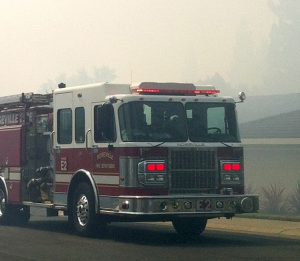 The gas had evaporated quickly but still had time to ignite the newspaper which was still burning. A slight breeze started to carry newspaper remnants through the yard. I ran outside with Mark right next to me. Jon joined us in putting out burning pieces of newspaper. We all noticed one burning piece floating away over the fence into the neighbor’s yard. We froze and watched as it went over the fence and out of sight. I looked at Mark and Jon and saw the rest of the crowd were following the action with us.
The gas had evaporated quickly but still had time to ignite the newspaper which was still burning. A slight breeze started to carry newspaper remnants through the yard. I ran outside with Mark right next to me. Jon joined us in putting out burning pieces of newspaper. We all noticed one burning piece floating away over the fence into the neighbor’s yard. We froze and watched as it went over the fence and out of sight. I looked at Mark and Jon and saw the rest of the crowd were following the action with us.
In what seemed to be an incredibly short time we saw a flame through the cracks in the fence. A tinder dry tall bush caught fire and immediately shot flames up so high they could be seen above the fence. Mark was first to react. He shouted to Jon to boost him over the fence. I remember seeing him fly over the six-foot fence commanding Jon to follow. I ran to the house to grab a garden hose and looked back to see Jon struggling over the fence.
I grabbed the hose as others began running out of the house to help. We got the hose to a hole in the fence. It is just long enough to go through the fence. Someone shouted to turn it on and water squirted everywhere. The hose was full of holes! Because of this the water pressure was practically nonexistent. What made it worse was that the hose was short of the fire by about six feet, making it rather impotent as a firefighting tool. A line of about six people raised the hose to waist level and tried to plug the leaks by holding their hands over the holes.
I grabbed a couple of people near me and shouted for them to come with me to the house where we started grabbing pots and pans, filling them with water and forming a fire brigade. This seemed like a good idea. However, stealing water from the kitchen sink and the bathtub resulted in the water pressure dropping even more. The entire scene became a frustrating comedy of errors.
From the beginning, when we first decided to shoot off these effects, I knew how dangerous it was and what the possible outcomes were. Now, my worst fears were being realized. I turned and saw a couple sneak out the front door. They must have seen me reaching for the phone knowing I’m about to call 9-1-1. I turned and saw the drummer from the band cowering in a corner on the landing of the stairs. I think he was crying. People were running in and out carrying pans of water, shouting, slipping, and splashing. There seemed to be more water being spilt than making it to the fire. I couldn’t see if any of this was working to put the fire out. Just then I see smoke coming out of the roof of the neighbor’s house and I know I have to make the call.
When the emergency operator came on I switch to my calm and collected voice and tell her there’s a fire. I thought it odd, but she didn’t ask where the fire was. The first thing she asked was my name, so I tell her.
There seemed to be no end to the chaos outside. There was so much smoke and people were tripping over each other. It seemed as if the same six people were still holding the hose in the hope that it will make a difference. I held the phone to my ear and talked to the operator and saw someone on a chair handing the pans of water over the fence. There was so much commotion I was barely able to hear the operator ask me for the address.
Just then I heard a shout, “It’s out! It’s out!” I sighed and told the operator what I just heard and told her there was no need for any fire trucks. She thanked me and hung up. She thanked me? I never understood why. I always thought I should have thanked her.
All the party goers were now starting to come back into the house bringing their pans back and drying themselves. Mark and Jon were still in the neighbor’s yard. We were all in the dark about what happened over there. No one could see much as they handed water over the fence.
A few minutes went by before they returned coming in the front door. When Mark came in and flashed that certain smile I knew then everything would be all right. It seemed the only thing to catch fire was a dead bush alongside the house. It was dry and sent up a lot of smoke that found its way inside the attic through the soffit vents in the overhang. The only real hindrance to putting out the fire was low water pressure and an old basset hound named Moses, and he just barked.
The back door of the neighbor’s house was just to the left of the now-extinguished burning bush. It was a sliding glass door, through which Mark and Jon had seen a woman holding a baby in one arm and the telephone with the other hand. She was standing up, looking out the door at the fire and the strange men in her yard, rocking from one leg to the other as if to calm the baby and herself. She had a disinterested look on her face as though she were talking to a telemarketer about light bulbs or a vacuum cleaner demonstration.
After the fire was extinguished Mark and Jon had gone inside the neighbor’s house to see if everything was all right. Mark climbed up into the attic space just as the last of the smoke was clearing. As he finished a friend of the woman came to the front door of the house to see if everything was all right. Mark recognized this friend as one of his university professors. She vouched for Mark and that seemed to calm the situation.
It was at this time the story, or excuse, of the barbecue accident was concocted. It seems we were having a party and cooking over the grill when we discovered there was no lighter fluid. So we used gas instead. Of course it was a terrible idea. We sure know that now.
With barely a break in stride Mark got the band together and started to play. He really knew how to read a crowd because it was just what everyone needed. For my part, with the adrenaline rush now subsiding, I felt exhausted and a pit began to form in my stomach. As dangerous and as crazy as the stunt was everyone had a great time. No one got hurt and we never heard back from anyone about damages.
Mark, Jon, and I continue to tell this story. It helped to define the friendship we would have over the years to come. Once in a while I will run into a strange face that stops me to say they were at that party. They always say what a great time it was. I realized that I really did manage to accomplish what I set out to do. I did help create a stunt that was the highlight of the evening — and then some.
